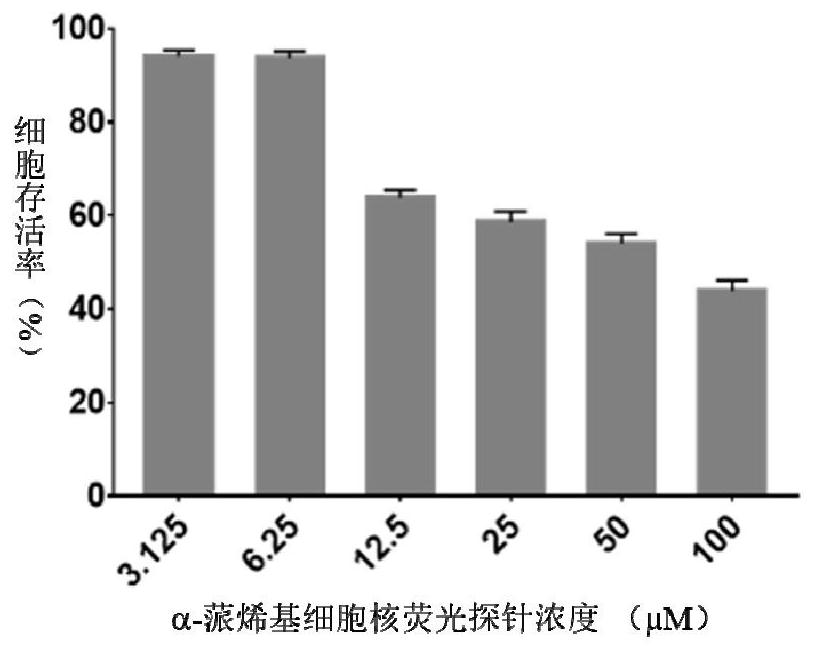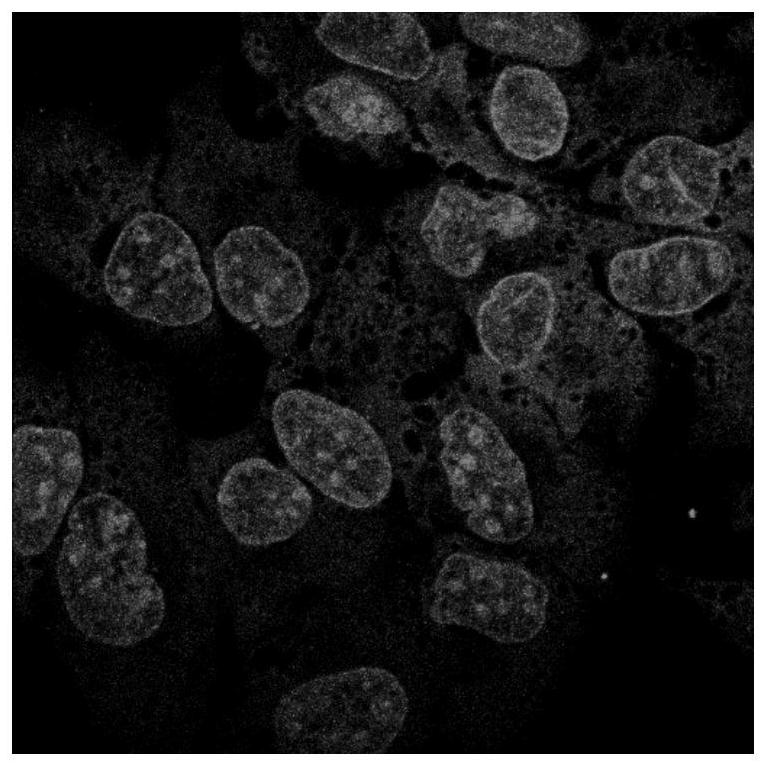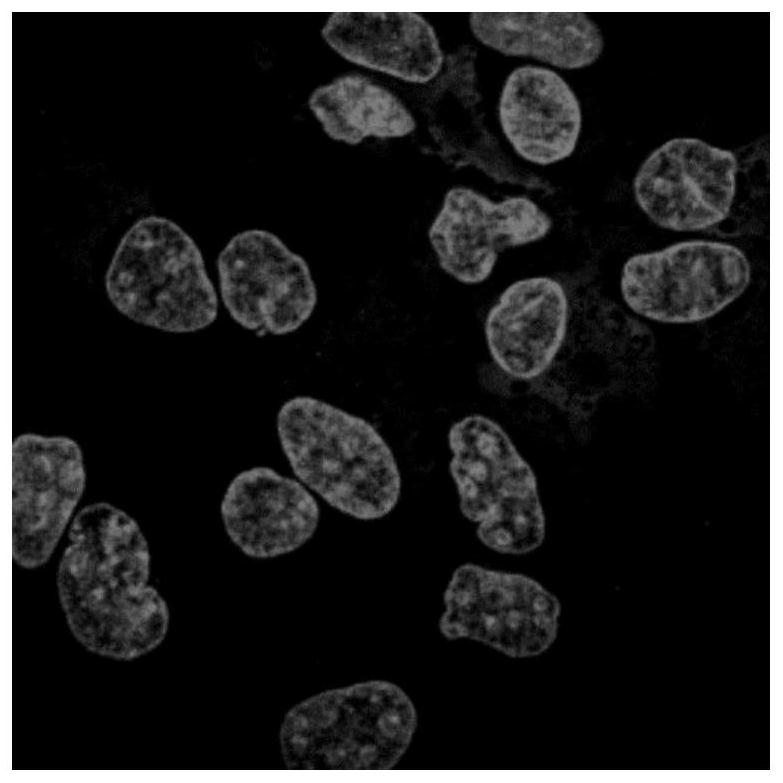A kind of α-pinene-based nuclear fluorescent probe and its preparation method and application
A pinene-based cell nucleus and fluorescent probe technology, which is applied in the fields of fluorescence/phosphorescence, chemical instruments and methods, and luminescent materials, and can solve problems such as high price, limited applicability, and photobleaching
- Summary
- Abstract
- Description
- Claims
- Application Information
AI Technical Summary
Problems solved by technology
Method used
Image
Examples
Embodiment 1
[0030] Example 1 Preparation of α-pinene-based nuclear fluorescent probe
[0031] 1) Preparation of α-pinenyl-4-methylthiosemicarbazone:
[0032] Add 10mmol of myrtenal, 12mmol of p-4-methylthiosemicarbazide, 3mL of 10% hydrochloric acid aqueous solution and 10mL of ethanol into a three-necked flask equipped with a stirrer, a thermometer and a reflux condenser, and react at 85°C ; The reactant was extracted 3 times with 60mL ethyl acetate, and the combined organic phases were washed to neutrality with saturated brine; the organic phase was dried over anhydrous sodium sulfate, filtered, and concentrated to recover the solvent to obtain α-pinenyl-4-methyl The crude product of α-pinenyl-4-methylthiosemicarbazone was washed with water and dried to obtain α-pinenyl-4-methylthiosemicarbazone with a yield of 80% and a purity of 99%. The characterization data of the product are as follows: 1 H NMR (400MHz, CDCl 3 )δ: 10.42(s, 1H), 7.63(s, 1H), 7.32(s, 1H), 6.02(s, 1H), 3.21(d, J=4....
Embodiment 2
[0037] Example 2 Application of α-pinene-based nuclear fluorescent probe
[0038] 1) Take the Hela cells in the logarithmic growth phase, digest with trypsin, adjust the cell concentration with culture medium, and use 1×10 cells per well. 5 The amount of cells was seeded in a 6-well plate, and 1×10 4 The amount of cells was seeded in a 96-well plate at 37°C, 5% CO 2 and incubated under saturated humidity conditions.
[0039] 2) After the cells grow on the wall, remove the culture medium, wash twice with PBS, add the drug diluted with complete medium to each well, and continue to incubate for a period of time.
[0040] 3) Add 10 μL CCK-8 reagent to the 96-well plate, continue to incubate for 2 hours, and detect the OD value at 450 nm.
[0041] 4) Discard the culture medium, wash the adherent cells twice with pre-cooled PBS to remove drugs not taken up by the cells, and fix with 4% paraformaldehyde for 30 min.
[0042] 5) Add an appropriate amount of commercial nuclear probe...
PUM
 Login to View More
Login to View More Abstract
Description
Claims
Application Information
 Login to View More
Login to View More - R&D
- Intellectual Property
- Life Sciences
- Materials
- Tech Scout
- Unparalleled Data Quality
- Higher Quality Content
- 60% Fewer Hallucinations
Browse by: Latest US Patents, China's latest patents, Technical Efficacy Thesaurus, Application Domain, Technology Topic, Popular Technical Reports.
© 2025 PatSnap. All rights reserved.Legal|Privacy policy|Modern Slavery Act Transparency Statement|Sitemap|About US| Contact US: help@patsnap.com



